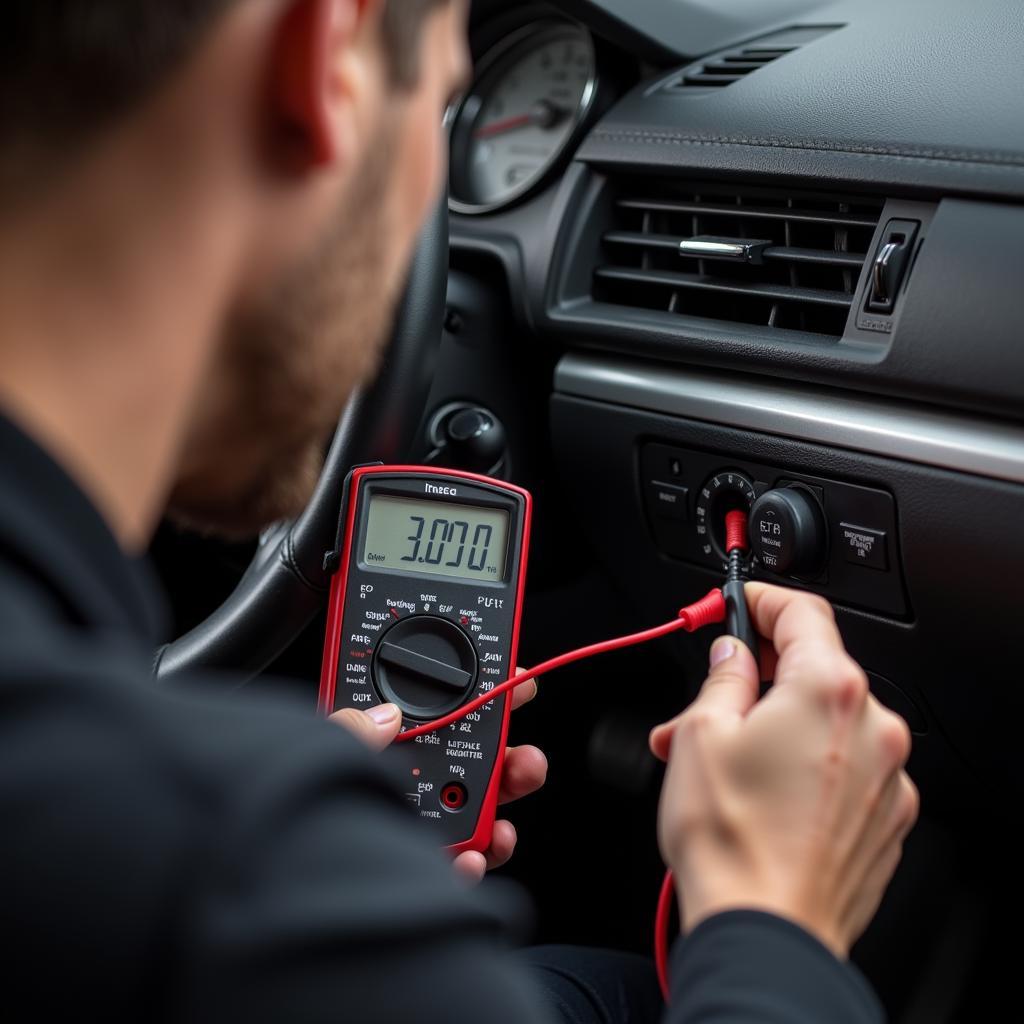Taking care of your car is essential to ensuring its longevity and reliability. Whether you’re a new car owner or simply want to learn more about basic car maintenance, this comprehensive guide will equip you with the knowledge and skills to keep your vehicle running smoothly for years to come.
This guide covers everything from routine checks to essential maintenance tasks, offering practical advice and actionable tips. You’ll learn how to identify common problems, troubleshoot issues, and perform basic repairs. By understanding the basics of car maintenance, you can save money, extend the life of your vehicle, and drive with greater confidence.
Essential Car Maintenance Tasks for Beginners
Regular car maintenance is the key to preventing major issues and keeping your vehicle running smoothly. Here are some essential tasks you should be familiar with:
1. Checking Fluid Levels
Checking fluid levels is a simple yet crucial part of routine car maintenance. Fluids like engine oil, coolant, brake fluid, and power steering fluid are essential for the proper functioning of various components.
Here’s how to check fluid levels:
- Engine oil: Locate the dipstick (usually yellow or orange) on the engine. Pull it out and wipe it clean with a rag. Insert it back in and pull it out again. Check the oil level against the markings on the dipstick. If it’s below the “low” mark, you need to add oil.
- Coolant: Locate the coolant reservoir, usually a white or green plastic container. Check the level and add coolant if needed. Ensure the coolant is at the “full” mark.
- Brake fluid: Open the hood and find the brake fluid reservoir, usually marked with a brake symbol. Check the level and add brake fluid if needed.
- Power steering fluid: The power steering fluid reservoir is typically located near the engine. Check the level and top it off if necessary.
Expert Tip: “Always use the recommended fluids specified by your car manufacturer. Using the wrong type of fluid can damage your engine and other components,” says John Smith, a certified automotive technician with over 20 years of experience.
2. Changing the Engine Oil
Regular oil changes are essential for maintaining a healthy engine. Oil lubricates moving parts, reducing friction and wear.
Here’s how to change your engine oil:
- Warm up the engine: Let the engine run for a few minutes to warm up the oil.
- Locate the oil drain plug: Find the drain plug at the bottom of the oil pan.
- Place a drain pan beneath the plug: Use a drain pan to catch the old oil.
- Loosen the drain plug: Use a wrench to loosen the drain plug and allow the oil to drain into the pan.
- Replace the drain plug: Once the oil has completely drained, tighten the drain plug.
- Remove the oil filter: Locate the oil filter, typically near the engine. Use an oil filter wrench to remove the filter.
- Install a new oil filter: Apply a thin layer of oil to the new filter’s gasket and screw it on. Do not overtighten.
- Add new oil: Pour the recommended amount of new oil into the engine through the oil filler cap. Check the oil level with the dipstick and top it off if necessary.
3. Checking the Tire Pressure
Proper tire pressure is crucial for safe and efficient driving. Underinflated tires can reduce fuel efficiency and increase wear and tear on your vehicle. Overinflation can lead to premature tire wear and make your car more prone to punctures.
Here’s how to check tire pressure:
- Locate the tire pressure sticker: The recommended tire pressure for your vehicle is typically found on a sticker located on the driver’s side doorjamb or the glove compartment.
- Use a tire pressure gauge: Insert the gauge into the tire valve stem until you hear a hiss. Read the pressure indicated on the gauge.
- Adjust tire pressure: If the tire pressure is below the recommended level, add air using a portable air compressor or a gas station air pump. If the tire pressure is above the recommended level, release air until it reaches the correct pressure.
Expert Tip: “It’s best to check your tire pressure when the tires are cold, meaning the vehicle hasn’t been driven recently. Tire pressure increases as the tires heat up while driving,” advises Mary Jones, a certified automotive technician.
4. Replacing the Air Filter
The air filter prevents dust, dirt, and other debris from entering the engine. A dirty air filter can restrict airflow to the engine, resulting in decreased fuel efficiency and engine performance.
Here’s how to replace the air filter:
- Locate the air filter housing: The air filter housing is typically found under the hood, near the engine.
- Open the housing: Release the clips or latches holding the housing closed.
- Remove the old air filter: Carefully lift out the old air filter.
- Install a new air filter: Place the new air filter into the housing, ensuring it’s properly aligned.
- Close the housing: Secure the housing by closing the clips or latches.
5. Checking the Battery Terminals
Corrosion on the battery terminals can hinder the flow of electricity to the starter motor and other components.
Here’s how to check the battery terminals:
- Locate the battery: The battery is usually located under the hood, near the engine.
- Inspect the terminals: Look for any signs of corrosion on the battery terminals. Corrosion appears as a white, powdery substance.
- Clean the terminals: If you find corrosion, use a battery terminal cleaner or a baking soda solution to remove it.
- Reconnect the terminals: Once the terminals are clean, reconnect them to the battery.
 Close-up of a person cleaning car battery terminals
Close-up of a person cleaning car battery terminals
Common Car Problems and Troubleshooting
Even with regular maintenance, your car may encounter issues from time to time. Understanding common car problems and how to troubleshoot them can save you time, money, and headaches.
1. Car Won’t Start
A car that won’t start can be frustrating, but it’s often a simple fix. Here’s a troubleshooting checklist:
- Check the battery: A dead battery is a common culprit. Use a multimeter or jump start the car.
- Inspect the terminals: Ensure the terminals are securely connected and free of corrosion.
- Check the starter: Listen for a clicking sound when turning the key. A clicking sound often indicates a faulty starter.
- Verify fuel supply: Check if the fuel pump is working by listening for a humming sound when you turn the key. If you don’t hear a humming sound, the fuel pump may be faulty.
2. Engine Overheating
An overheating engine is a serious problem that can lead to damage.
- Check the coolant level: Ensure the coolant level is adequate. If the level is low, add coolant.
- Inspect the radiator: Look for leaks or blockages in the radiator.
- Check the thermostat: A faulty thermostat can cause the engine to overheat.
- Monitor the cooling fan: The cooling fan should turn on when the engine is hot.
3. Brakes Making Noise
Noises from your brakes can indicate a problem that needs attention.
- Check the brake pads: Worn brake pads can cause squeaking or grinding noises.
- Inspect the brake rotors: Grooved or warped rotors can cause vibrations or pulsations when braking.
- Examine the brake calipers: A stuck brake caliper can cause dragging, leading to overheating and noise.
4. Check Engine Light
A check engine light is a signal that something is wrong with your car’s engine.
- Use an OBD-II scanner: An OBD-II scanner can read the engine codes and provide information about the issue.
- Address the problem: Once you know the engine code, consult a repair manual or a certified technician to diagnose and fix the problem.
Conclusion
Car Maintenance For Beginners may seem daunting, but it’s essential for keeping your vehicle running smoothly and extending its lifespan. By mastering these basic tasks and troubleshooting tips, you’ll be able to save money, increase your car’s longevity, and drive with greater confidence.
Don’t hesitate to reach out to us for support and guidance. We are committed to helping you keep your car in top condition.
Contact us today at +1 (641) 206-8880 or visit our office at 500 N St Mary’s St, San Antonio, TX 78205, United States.
FAQs
1. How often should I change my engine oil?
The recommended oil change interval varies depending on the make and model of your vehicle. Consult your owner’s manual or a certified technician for guidance.
2. What are some signs that I need to take my car to a mechanic?
Some signs that your car needs professional attention include:
- Warning lights on the dashboard
- Strange noises or vibrations
- Leaking fluids
- Engine misfires or stalling
- Difficulty starting
3. How can I improve my car’s fuel efficiency?
Follow these tips to improve your car’s fuel efficiency:
- Maintain your tires at the recommended pressure.
- Avoid unnecessary acceleration and braking.
- Use cruise control when driving on highways.
- Reduce your load by removing unnecessary items from your vehicle.
- Consider using a fuel-efficient driving style.
4. How can I prevent my car from rusting?
Regularly wash and wax your car to protect the paint and prevent rust. Also, ensure that any minor scratches are addressed promptly.
5. What are some common car maintenance myths?
There are several common car maintenance myths. One popular myth is that you need to change your oil every 3,000 miles. Modern cars with synthetic oil often have longer oil change intervals.
Another common myth is that you should add additives to your fuel. These additives can actually harm your engine. Always consult with a certified technician for recommendations on additives.
6. What are some tips for preparing my car for a long road trip?
Before embarking on a long road trip, ensure your car is in optimal condition. Here are some tips:
- Have a comprehensive pre-trip inspection.
- Check all fluid levels.
- Verify tire pressure and tread depth.
- Inspect lights and wipers.
- Pack a roadside emergency kit.
- Ensure you have a full tank of gas before you set off.
7. How can I learn more about car maintenance?
There are many resources available to help you learn about car maintenance. You can read books, watch videos, or take online courses. You can also consult with a certified technician for personalized guidance.






Leave a Reply